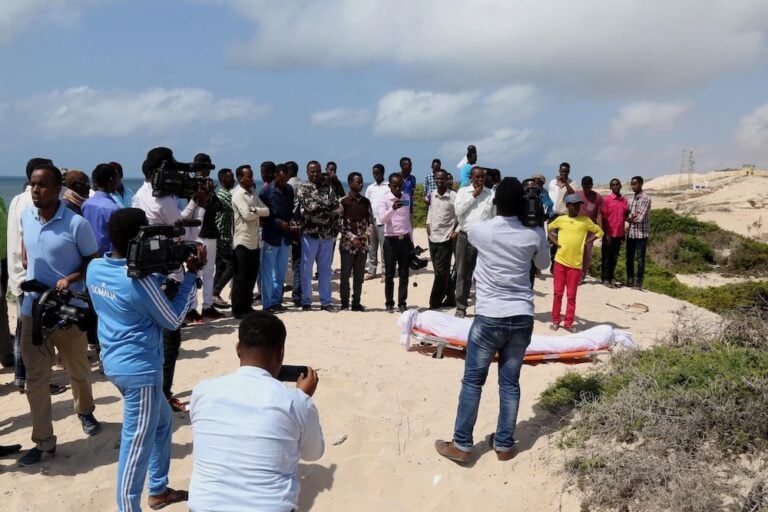Somali journalists are working in extreme conflict zones with risks that include small arms and explosives attacks, as well as the ever-increasing possibility of murder or abduction.
(NUSOJ/IFEX) – 16 November 2012 – The National Union of Somali Journalists (NUSOJ), in cooperation with the International Federation of Journalists (IFJ), today concluded a first-ever international safety training for Somali journalists in the country’s capital city, Mogadishu.
Somalia has been a hotspot for journalists, and Mogadishu in particular, where several journalists were murdered in cold blood. The journalists of Somalia have emerged as the most at risk journalists in Africa, according to IFJ records. Fifteen journalists (eight women and seven men) working for broadcast and print media in Mogadishu benefited from the safety training presented by an internationally-renowned, UK-based trainer.
“We are satisfied to have provided the necessary safety training to our colleagues in Somalia and would be happy to do it again to protect the lives of the hundreds of young journalists who risk their lives to get the news to the Somali people and to the world,” said Gabriel Baglo, director of IFJ’s Africa Office.
Journalist were equipped with skills on operational media safety planning, risk assessment, travel safety awareness, personal media safety, land mines and explosive devices prevention, public disorder and riot management, ballistics protection and kidnapping and abduction awareness, as well as locally-adopted safety awareness based on the current security situation in Mogadishu and the related life-threatening dangers.
“The training provided unique support and practical solidarity for the endangered journalists of Somalia. Taking practical actions to help protect the lives of journalists by training Somali journalists in their own local environment to protect themselves and remain safe while doing their professional work is very important,” said NUSOJ Secretary General Omar Faruk Osman.
The workshop which was financed by the European Union under its European Instrument for Democracy and Human Rights (EIDHR) is the first training on safety of journalists organized in Mogadishu, and it provided badly-needed safety skills.
Somali journalists are working in extreme conflict zones with risks posed by small arms attacks, improvised explosive devices and explosive threats, harassment and physical attacks, and the ever-increasing possibility of murder, kidnapping and abduction.
The safety training was specific and unique to current threats in Somalia. The course was designed based on risks and threats journalists have faced in recent years.
Participants expressed their gratitude to have gained safety training in the early stages of their careers as they have witnessed many of their colleges being killed in the line of duty without such safety knowledge.
Some of the participants who attended the course were actual victims of small arms and suicide attacks in recent months, including a young female, frontline journalist. They explained that they are now better prepared to face the ongoing risks that are associated with daily newsgathering in an extreme conflict environment. The course embedded a positive train of thought among the journalists to pass on the safety information to their colleges and start creating a safety culture within their own media organizations.
IFJ is the first international press freedom advocacy organization and global union federation to step foot in Mogadishu since the deadly attacks on journalists started in 2007. IFJ last visited Mogadishu in 2005, during the NUSOJ General Assembly.


